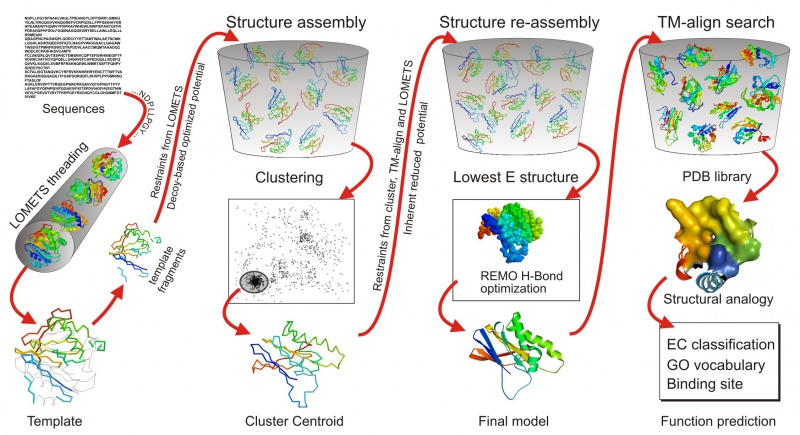Difference between revisions of "I-TASSER"
Jump to navigation
Jump to search
| Line 7: | Line 7: | ||
The Wikipedia link can be found [https://en.wikipedia.org/wiki/I-TASSER here]. | The Wikipedia link can be found [https://en.wikipedia.org/wiki/I-TASSER here]. | ||
| − | :''(from the Wikipedia page) I-TASSER (Iterative Threading ASSEmbly Refinement) is a bioinformatics method for predicting three-dimensional structure model of protein molecules from amino acid sequences.<ref name="RoyNat"/> It detects structure templates from the Protein Data Bank by a technique called fold recognition (or threading). The full-length structure models are constructed by reassembling structural fragments from threading templates using replica exchange Monte Carlo simulations. I-TASSER is one of the most successful protein structure prediction methods in the community-wide CASP experiments.'' | + | :''(from the Wikipedia page) I-TASSER (Iterative Threading ASSEmbly Refinement) is a bioinformatics method for predicting three-dimensional structure model of protein molecules from amino acid sequences.<ref name="RoyNat"/> It detects structure templates from the Protein Data Bank by a technique called fold recognition (or threading). The full-length structure models are constructed by reassembling structural fragments from threading templates using replica exchange Monte Carlo simulations. I-TASSER is one of the most successful protein structure prediction methods in the community-wide [https://en.wikipedia.org/wiki/CASP CASP] experiments.'' |
[[File:I-TASSER-pipeline.jpg|800px]] | [[File:I-TASSER-pipeline.jpg|800px]] | ||
Revision as of 14:53, 13 June 2019
Welcome the I-TASSER tutorial page, a part of the Monmouth College Wiki.
Introduction
The official link to the I-TASSER website can be found here.
The Wikipedia link can be found here.
- (from the Wikipedia page) I-TASSER (Iterative Threading ASSEmbly Refinement) is a bioinformatics method for predicting three-dimensional structure model of protein molecules from amino acid sequences.[1] It detects structure templates from the Protein Data Bank by a technique called fold recognition (or threading). The full-length structure models are constructed by reassembling structural fragments from threading templates using replica exchange Monte Carlo simulations. I-TASSER is one of the most successful protein structure prediction methods in the community-wide CASP experiments.
Activity
References
- ↑ Cite error: Invalid
<ref>tag; no text was provided for refs namedRoyNat
